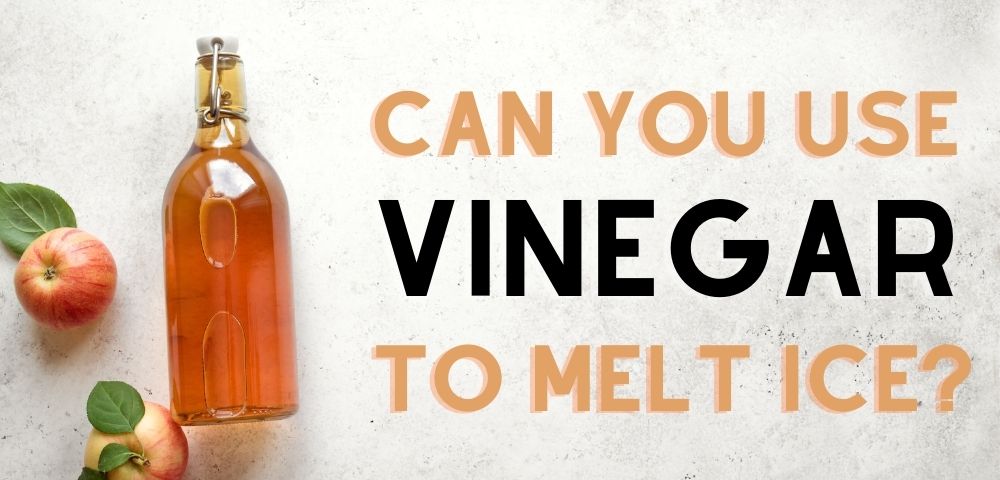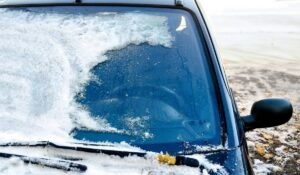The last thing you want is for slippery ice to build up on your paths or driveways or for ice to form on your windshield in the morning making it tedious or time consuming to remove before driving
Salt can be an effective method to de-ice your driveways and sidewalks however it is generally considered not safe for concrete. Using your cars heater or scraping off the ice yourself can be time consuming. But what about a natural product like vinegar, can it be used to de-ice your driveway or windshield?
Vinegar lowers the melting temperature of ice to 28ºF (-2ºC) making it melt easier. Vinegar is effective at melting thin ice from windshields by spraying it on, but it's not very effective at removing thick ice from driveways. Vinegar can damage car paint and kill plants and grass so it should be used with caution.
How Does Vinegar Melt Ice?
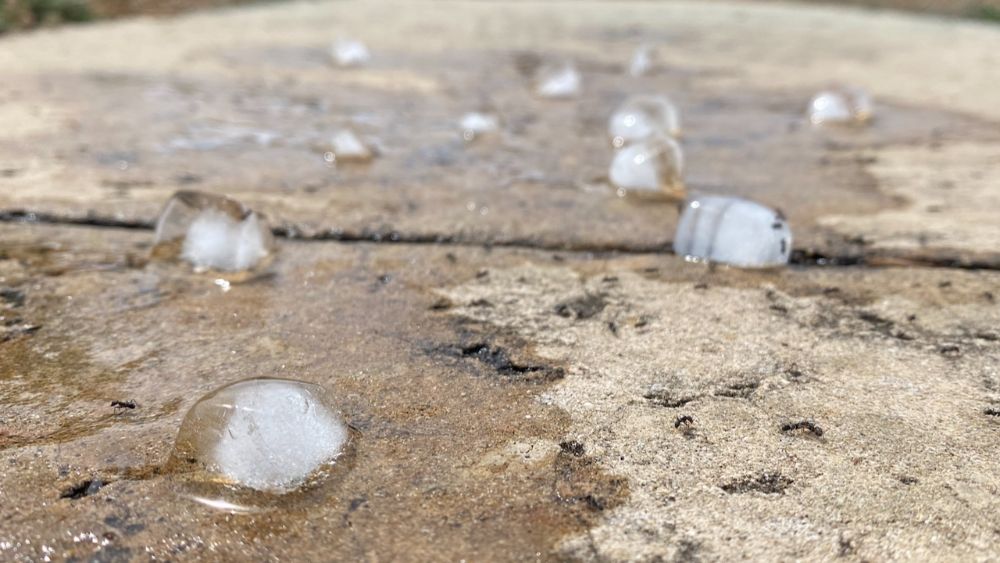
Before we talk about how to use it, let’s look at the scientific reasons why vinegar is an effective way of getting rid of the ice around your house. When you spray vinegar on ice, it will bond with the water molecules. When this happens, it changes the melting temperature, because of the concentration of acids it contains.
This is a very similar process to how salt can make ice melt, only salt tends to be a lot more effective than vinegar lowering the melting point of the ice to 0ºF (-18ºC) for salt vs 28ºF (-2ºC) for vinegar.
This change means that the ice will melt more readily. The high acids in the vinegar will stay in the area. This will make it harder for new snow and ice deposits to form.
Using Vinegar to Melt Ice
Vinegar is an ok choice for melting the ice on your sidewalks and driveways. It works effectively when temperatures are just below freezing, but if you've got temperatures below 28ºF (-2ºC) then a different solution such a rubbing alcohol is going to be more effective.
The good thing about using vinegar is that it's a natural product and contains no harmful chemicals to hurt humans or pets. However, it is very acidic and thus can cause damage to the paint on your car or can kill plants and grass so use it with caution.
It’s also easy to implement this method. There are just a handful of steps:
- Get a spray bottle
- Add a 50:50 mix of vinegar and water
- Shake to combine the two liquids
In some cases, you will find that the ice is too thick and the mixture is having a hard time cutting through it. In this case, you can increase the amount of white vinegar you are using or you'll need to opt for something more effective.
The good news is that the acidity in the vinegar will stop the ice from reforming for a while. Because of this, you can use this as a preventative measure, spraying vinegar along the sidewalk and driveway or on your car windshield before you go to bed at night.
Finally, there is a way to take this solution to the next level. You can use some wood ash in the mixture. This will give you traction, so you don’t need to be worried about slipping over as the ice melts. Just sprinkle this over the area once you are done spraying it.
Using Vinegar to Melt Ice on the Windshield
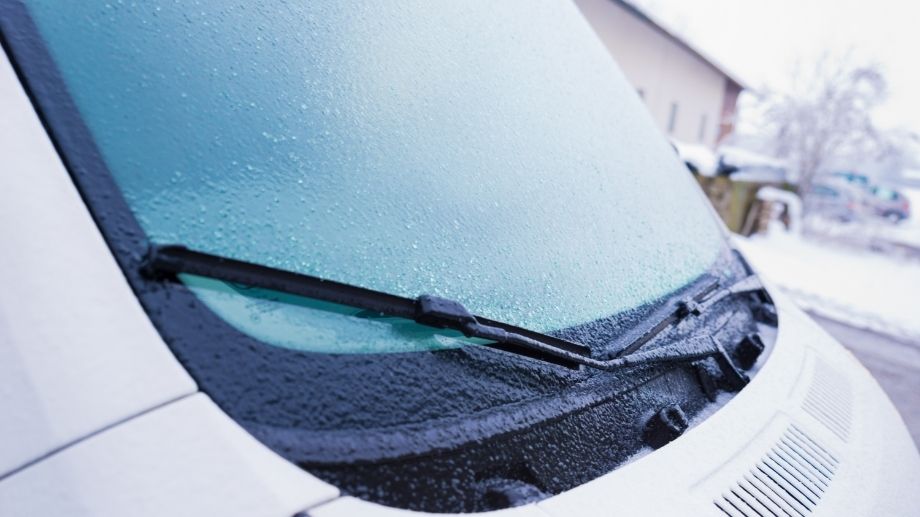
This solution isn’t just useful for melting the ice that has formed on the ground. You can also use it to de-ice your windscreen or the windows of your house.
Make up a 50:50 mixture of white vinegar and water. Then, spray it on the glass and leave for a minute or two.
You can then use a soft cloth to rub the ice off, use your windscreen wipers to brush it or or even scrape it off with a scraper. It should come away a lot easier than if you did nothing at all.
Then, use a soft cloth to rub it in. You will need to do this the night before you want to drive the car, to stop the ice from forming.
You will also be able to use this mixture on the side windows. You can also apply it to the glass windows.
You can also spray some vinegar on your windscreen in the evening. This can stop ice from forming on your windscreen in the first place as the night gets colder, leaving you with little to no ice to scrape off or deal with in the morning.
In the morning, most of the ice should be gone or at least be less frozen than regular ice. You just need to wipe it with a soft sponge. If some still lingers, you will need to give it another spray. Leave it for a few minutes.
This should help to break up the ice. You might need a scraper to help remove it. Wipe down the windshield with a soft sponge to get rid of lingering ice.
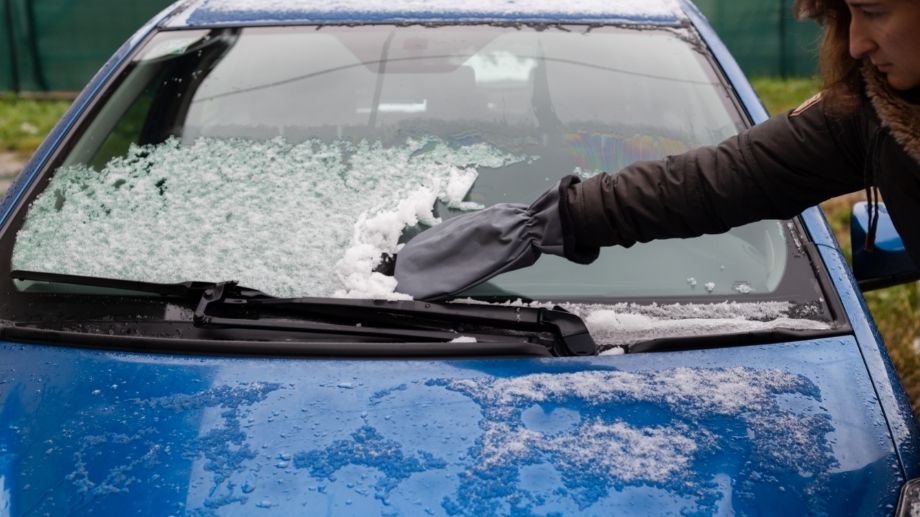
However, you should check the windscreen for cracks before you apply the solution. If there are any chips, you should avoid using an acidic solution. It might widen these cracks, making the damage more severe.
If you are planning on doing this, there are some things that you should keep in mind:
- Only spray the glass. White vinegar is ideal for stopping the ice from forming on your windscreen overnight. But some parts of the car won’t agree with the white vinegar. For example, the solution might damage some metal components. The acid might also eat through the paint.
- Use a squeeze and some water. This will help you remove any streaks that were left by the ice melting.
- Don’t use hot or warm water. While this might seem like a good way of melting the ice faster, it can often backfire. There is a risk that it will damage the windscreen. Most commonly, it will cause cracks.
When done, right, though, it should be able to stop the ice from forming on your windows. But there are a few other ways you can reduce the amount of ice you are dealing with. For example, you can use a cover. Furthermore, you can park your car facing towards the east. This is the direction the sun rises in. So, the additional heat will help melt some of the ice away.
Other Ways to Melt Ice
White vinegar is a good solution, it isn’t the only one that you have at your disposal. Here are some of the other homemade options you can explore:
- Rubbing alcohol. This is one of the most popular liquid solutions you can use. You’ll need to mix a 70:30 ratio alcohol to water solution in a spray jar. Then spray the snow and ice. It works fairly quickly. You should be able to break it down within 15 minutes. This can also be used on your windshield or windows.
- Rock salt. This is one of the most popular ways to bust through the ice. In this case, you will need to sprinkle some around the driveway. You should be able to source rock salt from your local hardware store.
- Fertilizer. This is one of the least popular options. But the ammonia in the fertilizer will help raise the temperature, melting through the window. However, you might want to be cautious about using this. The melting ice can carry the chemicals into the sewers, where there is a risk they will cause an algal bloom.
- Baking soda. When mixed with salt and warm water, this can form a potent mixture, making it easy for you to clear the ice away.
- Calcium Chloride. If you have periods of extreme cold, you might need to use something like this. It will be able to work at a temperature of -40ºF. However, it also has the potential to corrode metal, so you’ll need to be careful about how it is used.
How to Stop Ice From Forming on Your Sidewalk or Driveway
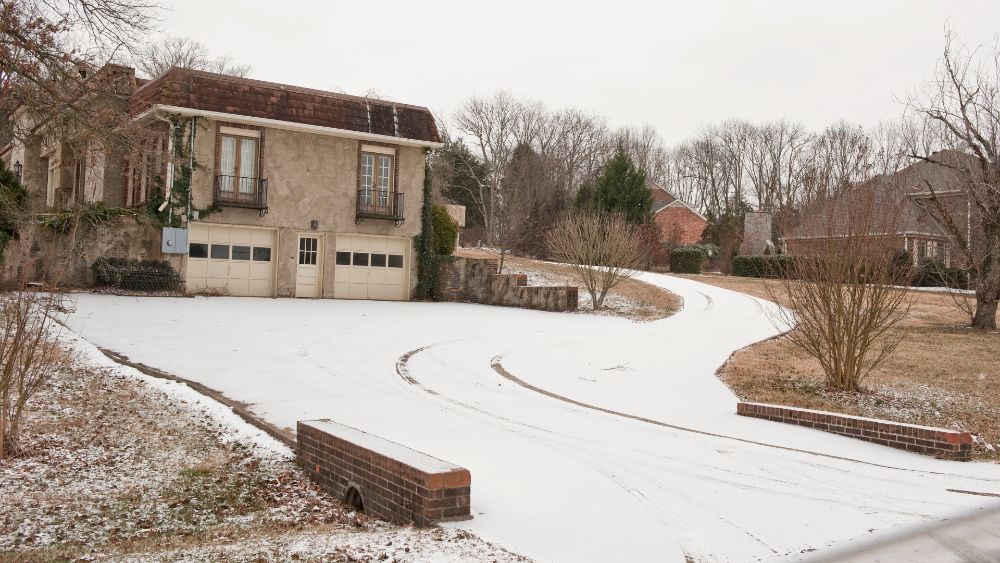
Usually, though, it’s easiest to stop the ice from forming in the first place. There are a few simple ways you can do this. First, you can use a melt mat or a heated driveway. These will often be expensive systems. But they might be worth the money if you need to deal with snow every year.
If you are looking for a more low-cost solution, you can spray vinegar. As we mentioned, this will stop the ice from forming. You might need to respray every morning and night.
Another option is to use a tarp. Lay it down before the snowfall starts. Then, when it has finished you can remove the tarp, taking all the snow with it. This is often only effective in milder climates where you might only get a few snowy days a month.
Final Thoughts
Vinegar might not be one of the most well-known ways of melting ice. But it can be an effective solution in some scenarios.

